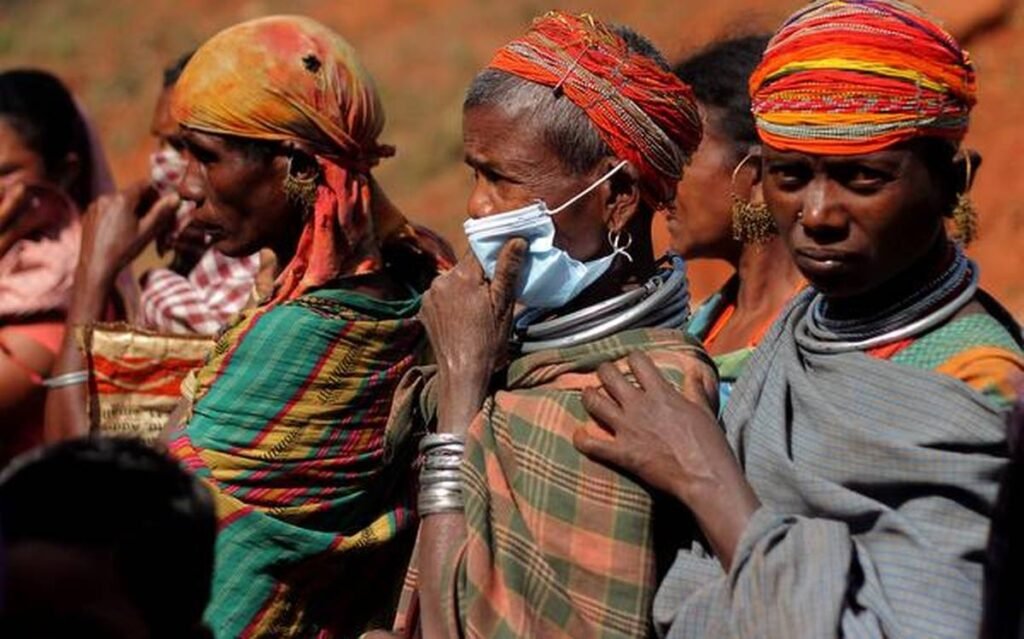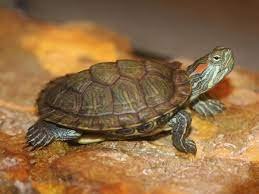Blog
May 14&15th Current Affairs
- May 15, 2021
- Posted by: admin
- Category: Culture Current Affairs Daily News Defense & Security Disaster Management Economy Education Environment & Ecology Ethics Geography Governance Health History International Relation Persons in News Polity Science & Technology Social Issues Sports Uncategorized UPSC Notification Videos
1.SWAMIH

IN NEWS:
Union Minister for Finance & Corporate Affairs handed over possession to homebuyers as Special Window for Affordable & Mid-Income Housing (SWAMIH) Fund completes its first residential project.
KEY HIGHLIGHTS:
- The residential project – Rivali Park, located in suburban Mumbai, was the first housing project in India to have received funding under the SWAMIH Fund.
- The SWAMIH Fund was launched in 2019.
- Rivali Park Wintergreens is the first investment by the Fund and is also the first project to get completed.
- The SWAMIH Investment Fund is one of the largest private equity teams in India and has done commendable work despite COVID-19 related restrictions.
- The Fund is targeting to complete an aggregate of 1,16,600 homes.
- This Fund is bridging the trust deficit between homebuyers and developers by completing construction and delivering homes without depending on any other source of finance.
SOURCE:PIB
2. Basava Jayanti: Birth Anniversary of Guru Basaveshwara

IN NEWS:
The Prime Minister of India paid tribute to Jagadguru Basaveshwara on the occasion of Basava Jayanthi.
KEY POINTS:
- He was born in Karnataka in 1131 CE.
- He was an Indian 12th-century Philosopher, Statesman and a social reformer.
- He was Lingayat saint in the Shiva-focussed Bhakti movement, and Hindu Shaivite social reformer during the reign of the Kalyani Chalukya/Kalachuri dynasty.
- The Lingayats are a Hindu sect with a wide following in southern India that worships Shiva as the only deity.
- He is also known as Bhakti Bhandari (literally, the treasurer of devotion), or Basaveswara (Lord Basava).
Contribution:
- Basavanna spread social awareness through his poetry known as Vachanaas.
- Several important Lingayat works are credited to Basavanna, including Vachana such as the Shat-sthala-vachana, Kala-jnana-vachana, Mantra-gopya, Ghatna Chakra-vachana and Raja-yoga-vachana.
- Basavanna, like Gautama Buddha, taught people how to live happily in a rational social order which later came to be known as the Sharana movement.
- The Sharana movement attracted people from all castes, and like most strands of the Bhakti movement, produced a corpus of literature, the vachanas, that unveiled the spiritual universe of the Veerashaiva saints.
- Basava fought against the inhuman practice of the caste system, which discriminated against people based on their birth.
- The Anubhava Mantapa established by Basava laid down the foundation of social democracy.
- Basava believed that man becomes great not by his birth but by his conduct in the society.
- He taught the dignity of manual labour by insisting on work as worship.
- He died in 1167 CE.
SOURCE:PIB
3. Why not place convicts under house arrest, asks SC?

IN NEWS:
The Supreme Court has thrown open the door to the legislature to “ponder” over the idea of placing convicts under house arrest to avoid overcrowding of prisons.
KEY TAKEAWAYS:
- A Bench of Justices U.U. Lalit and K.M. Joseph, in a judgment, highlighted the “alarming” statistics of prisons.
- The suggestion is relevant considering the spread of COVID-19.
- A few days ago, a Bench, led by Chief Justice of India N.V. Ramana, issued a series of directions, including the grant of interim bail and parole to prisoners to decongest prisons.
- The occupancy rate in prisons had climbed to 118.5% in 2019.
- National Crime Records Bureau’s figures of 2019 show that 18,86,092 inmates were admitted in jails.
- The number of undertrial prisoners in 2019 was 3,30,487, which, in fact, constituted 69.05% of the total number of prisoners.
- Secondly, a very large sum (₹6818.1 crore) was the budget for prisons.
- The “tremendous” overcrowding of prisons and the huge budget were both relevant in the context of the possibilities that house arrest offers.
SOURCE:TH
4. Sovereign Gold Bond Scheme 2021-22

IN NEWS:
The Central Government in consultation with the RBI, has decided to issue Sovereign Gold Bonds.
KEY POINTS:
- The Sovereign Gold Bond (SGB) scheme was launched in November 2015 with an objective to reduce the demand for physical gold and shift a part of the domestic savings – used for the purchase of gold – into financial savings.
- The Gold Bonds are issued as Government of India Stock under the Government Securities (GS) Act, 2006.
- These are issued by the RBI on behalf of the Government of India.
- Bonds are sold through Commercial banks, Stock Holding Corporation of India Limited (SHCIL), designated post offices and recognised stock exchanges viz., National Stock Exchange of India Limited and Bombay Stock Exchange, either directly or through agents.
- Eligibility: The bonds are restricted for sale to resident individuals, Hindu Undivided Families (HUFs), trusts, universities and charitable institutions.
- Investors will be compensated at a fixed rate of 2.50% per annum payable semi-annually on the nominal value.
- The Bonds will be restricted for sale to resident individuals, Hindu Undivided Families, Trusts, Universities and Charitable Institutions.
- The tenor of the Bond will be for a period of 8 years with exit option after 5th year to be exercised on the next interest payment dates.
SOUTCE:IE
5. Covid-19 infections being reported among the Particularly Vulnerable Tribal Groups (PVTGs)

IN NEWS:
Many members of eight different Particularly Vulnerable Tribal Groups (PVTGs) got infected in the second wave of Covid-19 in Odisha.
The infected PVTGs include the Bonda tribe of Malkangiri hills and Dongaria Kondh tribe of Niyamgiri hills.
Key Points
Tribal Groups in Odisha:
- According to the 2011 Census, Odisha’s share of the country’s total tribal population was 9%.
- The Tribals constitute 22.85% of the State’s population.
- In terms of numbers of its tribal population, Odisha occupies the third position in India.
- Of the 62 tribal groups residing in Odisha, 13 are recognised as PVTGs.
- The 13 PVTGs in Odisha are: Bonda, Birhor, Chuktia Bhunjia, Didayi, Dungaria Kandha, Hill Kharia, Juang, Kutia Kondh, Lanjia Saora, Lodha, Mankirdia, Paudi Bhuyan and Saora.
- Tribal populations are found in the entire seven districts of Kandhamal, Mayurbhanj, Sundargarh, Nabarangpur, Koraput, Malkangiri and Rayagada, and in parts of 6 other districts.
PVTGs:
- Creation of Primitive Tribal Groups (PTGs): In 1973, the Dhebar Commission created Primitive Tribal Groups (PTGs) as a separate category, which are less developed among the tribal groups.
- In 2006, the Government of India renamed the PTGs as PVTGs.
- In 1975, the Government of India initiated to identify the most vulnerable tribal groups as a separate category called PVTGs and declared 52 such groups. In 1993 an additional 23 groups were added to the category, making it a total of 75 PVTGs out of 705 Scheduled Tribes.
- Among the 75 listed PVTG’s the highest number are found in Odisha.
Characteristics of PVTGs:
- The Government classifies PVTGs on their:
- Relative physical isolation,
- Stagnant or declining population,
- Low levels of literacy,
- Absence of written language,
- Pre-agricultural stage of economy, such as hunting, food gathering, shifting cultivation and terrace cultivation.
SOURCE:TH
6. Elephant Casualties On Railway Lines
IN NEWS:
- According to the Ministry of Environment, Forest and Climate Change (MoEFCC), a total of 186 elephants were killed after being hit by trains across India between 2009-10 and 2020-21.
- Assam accounted for the highest number of elephant casualties on railway tracks (62), followed by West Bengal (57), and Odisha (27). Uttar Pradesh saw just one death.
KEY HIGHLIGHTS:
Measures taken to avoid elephant casualties on railway lines
- A Permanent Coordination Committee was constituted between the Ministry of Railways (Railway Board) and the MoEFCC for preventing elephant deaths in train accidents.
- Clearing vegetation along railway tracks to enable clear view for loco pilots.
- Setting up underpass/overpass for safe passage of elephants.
- Regulation of train speed from sunset to sunrise in vulnerable stretches
- Regular patrolling of vulnerable stretches of railway tracks
- The MoEFCC released ₹212.49 crore to elephant range States under Centrally Sponsored Schemes (CSS) of Project Elephant to protect elephants, their habitat and corridors, to address man-elephant conflicts, and for the welfare of captive elephants, between 2011-12 and 2020-21.
SOURCE:TH
7. Red-Eared Slider

IN NEWS:
- The invasive red-eared slider can become a major threat to the biodiversity of water bodies across the Northeast region of India.
- The Northeast region of India is home to more than 72% of the turtle and tortoise species in the country.
KEY POINTS:
- Between August 2018 and June 2019, a team of herpetologists from the NGO ‘Help Earth’ found red-eared sliders in the Deepor Beel Wildlife Sanctuary and the Ugratara temple pond — both in Guwahati, Assam
- The red-eared slider (Trachemys scripta elegans) derives its name from red stripes around the part where its ears would be and from its ability to slide quickly off any surface into the water.
- It is native to the U.S. and northern Mexico.
- This turtle is an extremely popular pet.
- They grow fast and virtually leave nothing for the native species to eat.
- It has already affected States such as Karnataka and Gujarat, where it has been found in 33 natural water bodies.
- Preventing this invasive species from overtaking the Brahmaputra and other river ecosystems in the Northeast is crucial because the Northeast is home to more than 72% of the turtle and tortoise species in the country, all of them very rare.
SOURCE:TH
8. Tauktae:

IN NEWS:
Cyclone ‘Tauktae’, which lay as a deep depression over the Arabian Sea close to Lakshadweep, was likely to intensify into a ‘very severe cyclonic storm’ bringing heavy to very heavy rain to many parts of the western coast.
KEY POINTS:
- There is yet not clear whether the cyclonic storm will cross the Gujarat coast or just skirt it by May 18.
- It is very likely to intensify into a cyclonic storm during the next 12 hours and is very likely to intensify further during the subsequent 24 hours and move north, north-westwards.
- In view of Cyclone Tauktae warning, National Disaster Response Force (NDRF) has deployed 24 teams in Kerala, Karnataka, Tamil Nadu, Gujarat and Maharashtra.
Naming of the Tropical Cyclones
- The WMO/ESCAP Panel on Tropical Cyclones (PTC) at its 27th Session held in 2000 in Muscat, Oman agreed in principle to assign names to the tropical cyclones in the Bay of Bengal and Arabian Sea.
- The naming of the tropical cyclones over the north Indian Ocean commenced from September 2004.
- This list contained names proposed by then eight member countries of WMO/ESCAP PTC, viz., Bangladesh, India, Maldives, Myanmar, Oman, Pakistan, Sri Lanka and Thailand.
- The requirement for a fresh list of tropical cyclones including representation from five new member countries: Iran, Qatar, Saudi Arabia, United Arab Emirates and Yemen (total 13 member countries) was tabled during the 45th session of WMO/ESCAP, held in September 2018. The session was hosted by Oman.
SOURCE:IE
9. Child marriages may go unnoticed amid lockdown

IN NEWS:
- Last year, as the pandemic took a grip of the world and India went into a lockdown, child rights activists were alarmed to see a slew of child marriages being reported in Karnataka.
- Now, with another lockdown in place and weddings being restricted to houses because of tough guidelines, there are fears of child marriages going unnoticed.
KEY Highlights:
- Some activists and organizations have raised the issue with the Ministry and the Department of Women and Child Development (DWCD).
- Earlier, when child marriages happened at wedding halls, temples, etc., there were people who would alert the relevant authorities or activists who would be able to reach them on time to stop them. But now, with marriages happening at homes, we may get fewer alerts and our going there could be treated as trespassing.
- During the first lockdown, we saw child marriages for a variety of reasons, ranging from insecurity for the girl, wherein the parents assume their responsibility is over with her marriage, to the fact that they could get away with a simple marriage without calling too many people, resulting in less expenditure.
Background:
- The 2020 lockdown witnessed a slew of child marriages being reported in Karnataka.
- A total of 2,180 child marriage cases were reported in Karnataka as per reports of Childline (1098) from April 2020 to January 2021.
- The other complaints ranged from illegal adoptions, child trafficking and child labour to the need for medical help or shelter.
- The number of complaints eased when lockdown restrictions were relaxed but were still worrying.
Recommendations:
•There is a need to create awareness among the people on the ills of child marriage.
•People should alert Childline if they come across child marriages.
•The district authorities should constitute a committee to tackle child marriages and they should conduct regular inspections in the most vulnerable areas.
SOURCE:TH
